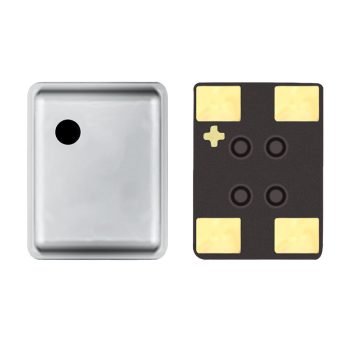Каталог
Введение в датчики давления
Pressure sensors are crucial components in various industries, including automotive, industrial automation, consumer products, and medical devices. The global pressure sensor market is projected to reach nearly $24.5 billion by 2028, reflecting their increasing importance in modern technology1. Pressure sensors operate based on the principle of force applied over an area, which is essential for understanding their applications and functionality.
Понимание технологии MEMS
MEMS (Micro-Electro-Mechanical Systems) technology is pivotal in the development of pressure sensors. MEMS sensors feature an elastic silicon diaphragm, which allows them to undergo repeated pressure cycling without altering their properties. This elasticity is beneficial as it minimizes hysteresis and creep, common issues in other sensor types
Преимущества MEMS
Экономическая эффективность: Thousands of sensors can be produced on a single wafer, significantly reducing costs.
Гибкость дизайна: Having an in-house wafer fab allows for better control over the supply chain and design customization.
Надежность: MEMS sensors are free from hysteresis and creep, ensuring consistent performance over time
Piezoresistive vs. Piezoelectric Sensors
Пьезорезистильные датчики
Piezoresistive sensors operate by measuring changes in electrical resistance when subjected to pressure. They are known for their repeatability and versatility, making them suitable for various applications, including medical procedures like angioplasty
Пьезоэлектрические датчики
Piezoelectric sensors generate an electric charge in response to mechanical stress. They are commonly used in applications requiring high sensitivity to vibrations and forces, such as in accelerometers and load sensors
For more guidance on piezoresistive vs. piezoelectric sensors, check out this article link:https://wfsensors.com/blog/use-and-function-of-mems-piezoresistive-pressure-sensorscomprehensive-guide.html/
Применение датчиков давления
Pressure sensors are used across multiple industries:
Автомобиль: For engine management and safety systems.
Дайвинг: To monitor depth and ensure safe ascent and descent times.
Электронные велосипеды: Integrated into shocks and tires to enhance performance.
Медицинский: In procedures like angioplasty to monitor balloon inflation
MEMS Pressure Sensors: Design and Functionality
Абсолютные датчики: Measure pressure relative to a vacuum reference.
Датчики датчика: Measure pressure relative to atmospheric pressure
Типы датчиков давления MEMS
MEMS pressure sensors feature a Wheatstone bridge diffused into a silicon diaphragm. The output change from this bridge corresponds to changes in applied pressure. The diaphragm’s thickness is adjusted based on the required pressure range
Факторы, влияющие на точность датчика давления
Accuracy in pressure sensors is crucial, especially in applications requiring precise measurements. Factors influencing accuracy include:
Температура: Changes in temperature can affect sensor sensitivity and resistance.
Стресс: External stresses during packaging can impact sensor performance over time
Достижение точности
Калибровка: Essential for ensuring accuracy.
Компенсированные датчики: Use onboard ASICs to simplify calibration and improve accuracy
Выбор датчика правого давления
When choosing a pressure sensor, consider the following factors:
Диапазон давления: Ensure the sensor can handle the required pressure range.
Условия окружающей среды: Consider temperature, humidity, and potential stressors.
Тип приложения: Determine if an absolute, gauge, or differential sensor is needed
Заключение
Pressure sensors, particularly those utilizing MEMS technology, play a vital role in modern industries. Understanding the differences between piezoresistive and piezoelectric sensors, as well as the design and functionality of MEMS sensors, is essential for selecting the right sensor for specific applications. By considering factors like accuracy, environmental conditions, and application type, users can ensure optimal performance and reliability in their systems.
Действенный совет
Оцените свои потребности: Determine the pressure range and environmental conditions for your application.
Выберите правильный тип датчика: Decide between piezoresistive and piezoelectric based on your application’s requirements.
Рассмотрим калибровку: Ensure your sensor is properly calibrated for accurate measurements.
By following these steps and understanding the principles behind pressure sensors, you can effectively integrate them into your projects and achieve reliable results.
Вышеупомянутое введение лишь поверхностно коснулось области применения технологии датчиков давления. Мы продолжим изучать различные типы сенсорных элементов, используемых в различных продуктах, их работу, их преимущества и недостатки. Если вам нужна более подробная информация о том, что здесь обсуждается, вы можете просмотреть соответствующий контент далее в этом руководстве. Если у вас мало времени, вы также можете нажать здесь, чтобы загрузить подробную информацию об этом руководстве. Данные датчика давления воздуха PDF.
Для получения дополнительной информации о других сенсорных технологиях, пожалуйста, Посетите нашу страницу датчиков.

